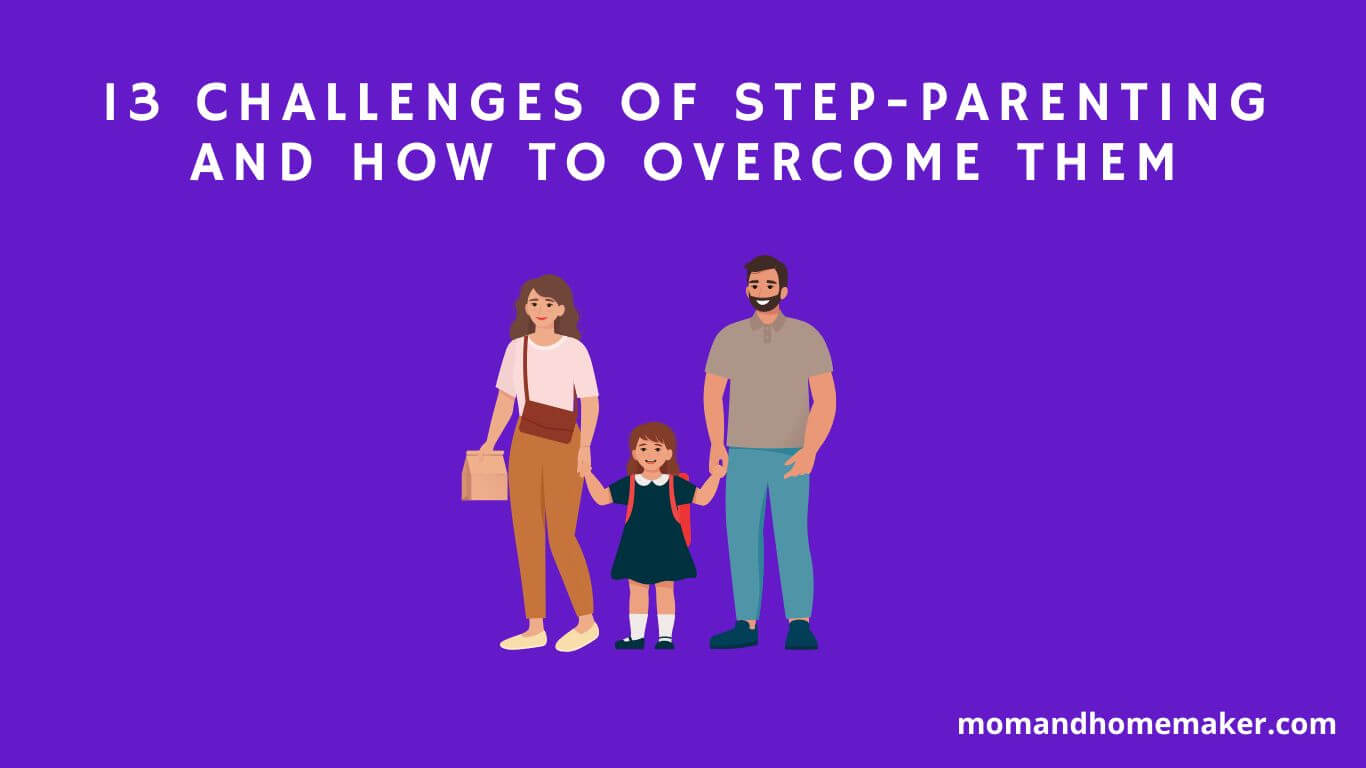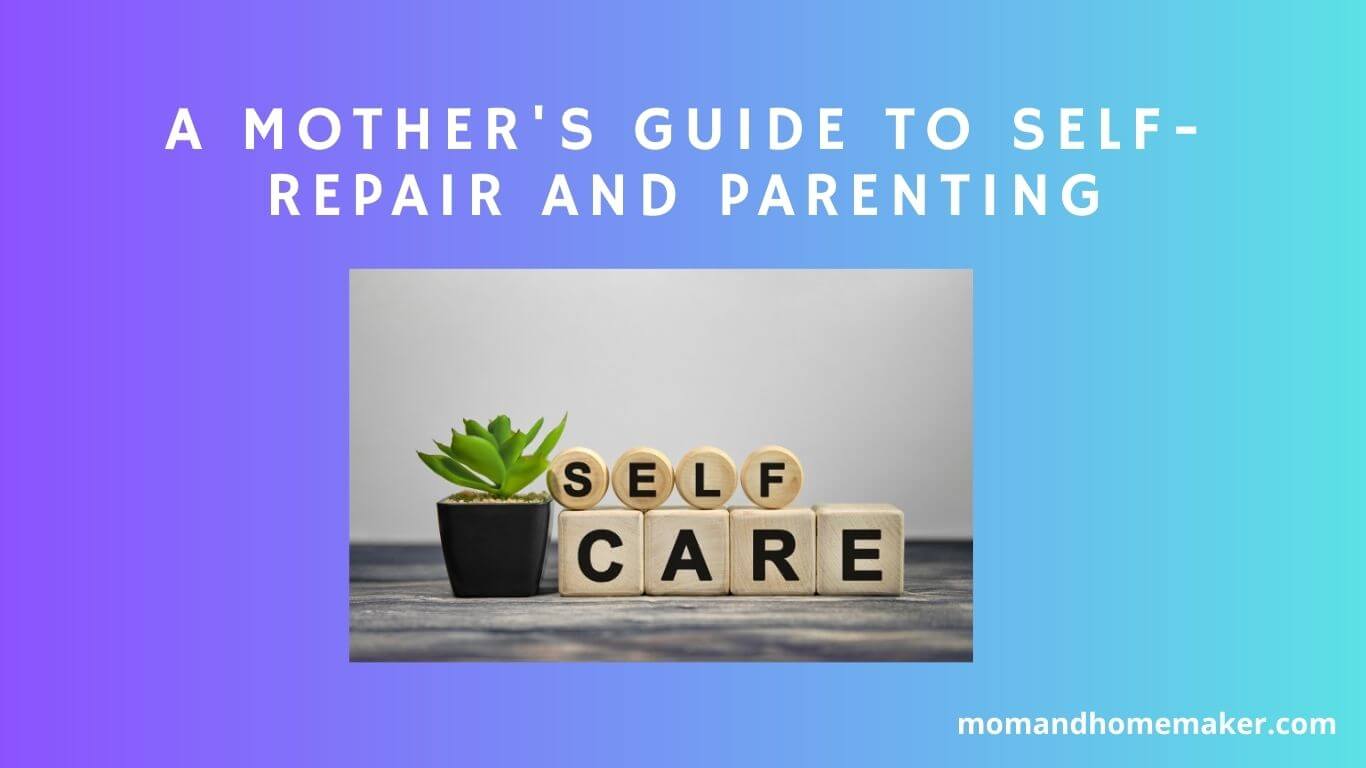Imagine yourself standing at the edge of a vast and treacherous maze, where the path ahead is shrouded in uncertainty. This maze represents the challenges that step-parents face as they navigate the complex world of blended families.
As a step-parent, you are tasked with forging connections, managing conflicts, and finding your place in a dynamic that is often fraught with tension. But fear not, for this article is here to guide you through the labyrinth and help you overcome these obstacles.
In this article, we will explore the various challenges step-parents encounter and provide you with practical strategies to overcome them. From establishing a bond with your stepchildren to dealing with ex-spouses and co-parenting challenges, we will address the unique difficulties you may face and offer solutions to help you navigate them with grace and resilience.
We will also delve into managing feelings of rejection or resentment, balancing responsibilities, and building a strong step-parent and stepchild relationship.
So, take a deep breath, gather your strength, and let us embark on this journey together. With the right tools and mindset, you can triumph over the challenges and create a harmonious and loving blended family.
Key Takeaways
- Open communication and empathy are crucial in overcoming step-parenting challenges.
- Building trust and understanding with stepchildren is essential for a harmonious stepfamily.
- Connecting with other step-parents in support groups or therapy sessions can provide valuable guidance and support.
- Setting clear boundaries and expectations helps establish a healthy and balanced relationship in a stepfamily.
Table of Contents
Navigating Complex Family Dynamics
Navigating complex family dynamics can be a daunting task, but by embracing open communication and empathy, step-parents can foster stronger relationships within their blended families. Stepfamilies often face unique challenges, such as conflicting loyalties, different parenting styles, and unresolved emotions from previous relationships.
To navigate these dynamics successfully, step-parents should prioritize building trust and understanding with their stepchildren. One effective way to do this is by encouraging open and honest communication. Creating a safe space for everyone to express their thoughts and feelings can help resolve conflicts and build stronger bonds. By actively listening and validating the emotions of their stepchildren, step-parents can establish a foundation of trust and openness.
Additionally, forming a support network can be invaluable for step-parents. Connecting with other step-parents who have faced similar challenges can provide a sense of validation and guidance. Online forums, support groups, and therapy sessions specifically designed for blended families can offer valuable resources and advice. These connections can help step-parents feel less isolated and provide a platform to share experiences and learn from others.
Navigating complex family dynamics in a stepfamily requires open communication, empathy, and the formation of a support network. By embracing these strategies, step-parents can overcome challenges and foster stronger relationships within their blended families.
Establishing a Bond with Stepchildren
To establish a strong bond with your stepchildren, it’s crucial to build a foundation of trust. Show them that you’re reliable, consistent, and genuinely interested in their well-being.
Additionally, finding common interests and activities can help create shared experiences and strengthen your relationship.
Lastly, practicing patience and empathy is essential. It takes time for stepchildren to adjust to a new family dynamic. Be understanding and supportive, allowing them to open up at their own pace.
Building a Foundation of Trust
Establishing a strong foundation of trust is like laying the first brick of a solid relationship as a step-parent. It is essential to set clear boundaries and expectations from the start, as this helps build mutual respect between you and your stepchildren. By clearly defining what is acceptable and what is not, you create a safe and secure environment where trust can flourish.
To help you visualize the importance of establishing boundaries and building mutual respect, consider the following table:
| Boundaries | Mutual Respect |
|---|---|
| Clearly communicate rules and expectations | Listen to your stepchildren’s thoughts and opinions |
| Consistently enforce consequences for actions | Show appreciation for their unique qualities |
| Respect their personal space and privacy | Encourage open and honest communication |
| Allow them to express their emotions and feelings | Treat them with kindness and understanding |
| Foster a sense of belonging and inclusion | Support their interests and hobbies |
By incorporating these practices into your relationship with your stepchildren, you can create a solid foundation of trust that will strengthen your bond and help you overcome the challenges of step-parenting. Remember, building trust takes time and patience, but the rewards are immeasurable.
Finding Common Interests and Activities
Creating shared interests and engaging in fun activities together can deepen the connection and bring joy into your relationship with your stepchildren. Finding shared hobbies is a wonderful way to bond with your stepchildren and create lasting memories. Here are some ideas to get you started:
- Explore outdoor activities like hiking, biking, or gardening.
- Get creative with arts and crafts projects.
- Cook and bake together, trying out new recipes.
- Have regular family game nights.
- Start a book club where you can read and discuss books together.
In addition to finding shared hobbies, creating family traditions can also strengthen your bond. Whether it’s a weekly movie night, an annual vacation, or a special holiday tradition, these rituals can provide a sense of stability and belonging for your stepchildren. By actively seeking out common interests and establishing family traditions, you can build a strong and loving relationship with your stepchildren.
Practicing Patience and Empathy
Practicing patience and empathy is like watering a delicate plant, nourishing the relationship with your stepchildren and allowing it to bloom and grow. Developing understanding and strengthening connection are essential in overcoming the challenges step-parents face. It takes time and effort to build a bond with your stepchildren, especially when they may be resistant or hesitant. Remember to approach the relationship with an open mind and heart, and be patient with the process. Empathy plays a crucial role in understanding their emotions and experiences. Put yourself in their shoes and try to see things from their perspective. This will help you connect on a deeper level and create a safe space for open communication. Additionally, incorporating shared activities and interests can foster a sense of belonging and unity. Use the table below to visualize the importance of practicing patience and empathy in your role as a step-parent:
| Patience | Empathy |
|---|---|
| Allows for growth | Fosters understanding |
| Builds trust | Enhances connection |
| Demonstrates love | Encourages communication |
Remember, serving others requires a compassionate and understanding approach. By practicing patience and empathy, you can create a loving and supportive environment for your stepchildren, helping them feel valued and accepted.
Dealing with Ex-Spouse and Co-Parenting Challenges
Navigating the complexities of co-parenting with an ex-spouse can feel like walking through a treacherous maze, but with open communication and a shared focus on the children, step-parents can find a path to success.
Here are five tips to help you overcome the challenges of dealing with your ex-spouse and co-parenting:
- Communication is key: Establish clear and open lines of communication with your ex-spouse. Be respectful, listen attentively, and try to understand their perspective. Avoid getting defensive or engaging in power struggles.
- Set boundaries: It’s essential to set boundaries with your ex-spouse to maintain a healthy co-parenting relationship. Clearly define responsibilities, expectations, and rules for both households. This will help minimize conflicts and confusion.
- Put the children first: Remember that the ultimate goal is to provide a loving and stable environment for the children. Keep their best interests at heart and prioritize their needs above any personal disagreements or conflicts.
- Seek professional help if needed: If communication barriers or power struggles persist, consider seeking the guidance of a professional mediator or therapist. They can help facilitate productive conversations and provide strategies for resolving conflicts.
- Practice self-care: Co-parenting can be emotionally draining, so it’s vital to take care of yourself. Make time for self-care activities, seek support from friends or a support group, and prioritize your well-being.
By implementing these strategies, you can navigate the challenges of co-parenting with your ex-spouse and create a positive and healthy environment for your stepchildren. Remember, patience, empathy, and a focus on serving the needs of the children are key to success.
Managing Feelings of Rejection or Resentment
While co-parenting with an ex-spouse, it can be difficult to manage the overwhelming feelings of rejection or resentment that may arise. It’s important to remember that these emotions are normal and valid, but they can hinder your ability to build a strong relationship with your stepchildren. Overcoming rejection starts with understanding that it is not a reflection of your worth as a person or a stepparent. The rejection may stem from the child’s loyalty to their biological parent or fear of change. By demonstrating love, patience, and consistency, you can gradually earn their trust and acceptance.
Managing resentment is equally important in creating a harmonious stepfamily. Resentment may stem from feeling unappreciated or excluded from important decisions. It’s crucial to communicate openly with your partner and establish clear boundaries and expectations. Additionally, finding healthy outlets for your emotions, such as talking to a trusted friend or joining a support group, can help you process and let go of resentment.
To further understand the challenges step-parents face and how to overcome them, let’s take a look at this table:
| Challenges | Overcoming Strategies | Supporting Resources |
|---|---|---|
| Feelings of Rejection | – Demonstrate love and patience | – Stepfamily support groups |
| – Understand it’s not personal | – Counseling services | |
| – Build trust through consistency | – Books on blended families | |
| – Seek professional help if needed | – Online forums | |
| Resentment | – Communicate openly with partner | – Couples therapy |
| – Establish clear boundaries and expectations | – Self-help books | |
| – Find healthy outlets for emotions | – Journaling | |
| – Practice forgiveness and let go | – Meditation or mindfulness exercises | |
| – Seek support from others who understand | – Supportive friends or family |
By implementing these strategies and seeking support, you can effectively manage and overcome feelings of rejection or resentment, creating a nurturing and loving environment for your stepchildren. Remember, it takes time and effort, but the rewards are well worth it.
Balancing Responsibilities and Time Management
Balancing responsibilities and managing time can be a daunting task for stepparents as they strive to create a harmonious and well-functioning stepfamily. It’s important to remember that you’re not alone in facing these challenges, and with the right mindset and strategies, you can overcome them.
One key aspect of balancing responsibilities is finding a way to prioritize your work life while still maintaining a healthy self-care routine. It’s easy to get caught up in the demands of your job and the needs of your stepchildren, but neglecting your own well-being will only lead to burnout and resentment.
Make sure to carve out time for yourself, whether it’s through exercise, hobbies, or simply taking a break to relax and recharge.
Another helpful tip is to establish clear boundaries and expectations with your partner and stepchildren. Communicate openly about your own needs and limitations, and work together to find a balance that works for everyone. This may involve delegating certain tasks or responsibilities, or even seeking outside help when necessary.
Lastly, don’t be afraid to ask for support. Reach out to other stepparents or join support groups where you can share your experiences and learn from others. Remember, you’re part of a community that understands the unique challenges you face, and together, you can find solutions and create a loving and supportive stepfamily.
Blending Different Parenting Styles
Bringing together two unique parenting styles can be like mixing different colors on a canvas, creating a vibrant and dynamic blend of approaches to raising children. Blending different parenting styles is an essential aspect of step-parenting, but it can also be a significant challenge.
When two adults with different ways of disciplining, communicating, and nurturing come together, conflicts and disagreements are bound to arise. However, with patience, understanding, and effective communication, these challenges can be overcome.
To successfully blend different parenting styles, it is crucial to manage conflicts and disagreements. Start by discussing each parent’s values, beliefs, and expectations regarding parenting. Identify areas of agreement and differences, and find common ground. Remember, compromise is key.
Create a unified approach by combining the best aspects of both styles and finding a middle ground that works for everyone involved.
Additionally, open and honest communication is vital in managing conflicts. Encourage open dialogue, active listening, and respect for each other’s opinions. When conflicts arise, address them promptly and find solutions together. It is essential to prioritize the well-being of the children and make decisions that will benefit them.
Remember, blending different parenting styles takes time and effort. Be patient with yourself and your partner, and be willing to adapt and adjust as needed. By working together and embracing the unique strengths of each parenting style, you can create a harmonious and supportive environment for your blended family.
Dealing with Step-Sibling Dynamics
When it comes to dealing with step-sibling dynamics, it’s important to focus on promoting positive relationships and bonding between the children.
Encourage them to spend time together, engage in shared activities, and find common interests.
Additionally, be proactive in resolving conflicts and rivalries that may arise, by encouraging open communication and problem-solving skills.
Finally, create a sense of unity and family by emphasizing the importance of supporting and respecting one another, and by creating traditions and routines that involve all members of the blended family.
Promoting Positive Relationships and Bonding
To foster a strong connection with your stepchild, let the seeds of trust and understanding grow through shared experiences and heartfelt conversations. Effective communication techniques are key in promoting positive relationships and bonding.
Make an effort to actively listen to your stepchild’s thoughts and feelings, and respond with empathy and validation. Encourage open and honest communication by creating a safe and judgment-free space for your stepchild to express themselves.
Additionally, establishing boundaries and expectations is crucial for building a healthy relationship. Clearly communicate your expectations and rules, while also respecting your stepchild’s boundaries. This will help create a sense of security and structure, allowing both of you to navigate the stepfamily dynamics more smoothly.
Remember, building a positive relationship takes time and patience, so be consistent and understanding as you work towards creating a strong bond with your stepchild.
Resolving Conflicts and Rivalries
Now that you’ve learned about promoting positive relationships and bonding with your stepchildren, it’s important to address the inevitable conflicts and rivalries that may arise. Resolving these challenges is crucial for creating a harmonious family dynamic.
To help you navigate these situations, here are three conflict resolution strategies you can implement:
- Open Communication: Encourage all family members to express their feelings and concerns in a calm and respectful manner. Active listening and empathy can go a long way in understanding each other’s perspectives.
- Mediation: When conflicts escalate, consider seeking the help of a neutral third party, such as a therapist or counselor, who can facilitate productive discussions and guide you toward effective solutions.
- Establishing Boundaries: Clearly define rules and expectations for everyone in the household. Consistent enforcement of boundaries can help prevent conflicts from arising in the first place.
By utilizing these conflict resolution strategies, you can promote harmony within your blended family and create a peaceful and loving environment for everyone involved.
Creating a Sense of Unity and Family
Imagine the joy and fulfillment you will experience as you watch your blended family come together as a united and loving unit, creating cherished memories and a strong sense of belonging. Building a sense of unity and family is crucial in overcoming the challenges step-parents face. One way to achieve this is by creating family traditions that everyone can participate in and enjoy. These traditions can range from simple activities like movie nights or game nights to more elaborate celebrations like annual vacations or holiday rituals. By involving everyone in the planning and execution of these traditions, you promote inclusivity and respect within the family. Another important aspect is promoting inclusivity and respect in everyday interactions. Encourage open communication, active listening, and understanding among family members. Remind everyone to treat each other with kindness, empathy, and appreciation. By consciously fostering a sense of unity and family, you can overcome the challenges step-parents face and create a loving and harmonious blended family.
| Creating Family Traditions | Promoting Inclusivity and Respect |
|---|---|
| Plan simple activities like movie nights or game nights | Encourage open communication |
| Organize annual vacations or holiday rituals | Practice active listening |
| Involve everyone in planning and execution | Promote understanding |
| Foster a sense of togetherness and belonging | Treat each other with kindness and appreciation |
Handling External Judgment and Criticism
Dealing with the constant external judgment and criticism can be incredibly overwhelming for step-parents, making it difficult to navigate through the challenges they face. However, it’s important to remember that you’re not alone in this journey, and there are ways to overcome these challenges and handle the judgment from others.
First and foremost, it’s crucial to develop a strong support system. Surround yourself with people who understand and support your role as a step-parent. Seek support groups or online communities where you can connect with others who are going through similar experiences. These connections can provide a safe space to share your feelings and seek advice.
Additionally, it’s important to set boundaries with those who criticize or judge you. Remember that their opinions don’t define you or your relationship with your stepchild. Stay confident in your abilities as a step-parent and focus on the positive aspects of your role. Surround yourself with positive affirmations and remind yourself of the love and care you provide to your stepchild.
Lastly, try to educate others about the challenges and joys of step-parenting. By sharing your experiences, you can help dispel misconceptions and promote understanding. Remember that you’re doing your best and that’s what truly matters. Don’t let external judgment and criticism discourage you. Stay strong, stay focused, and continue to make a positive impact on your stepchild’s life.
Fostering a Healthy Relationship with Biological Parent
To foster a healthy relationship with the biological parent, it’s important to encourage open communication and collaboration. By creating a safe space for both parties to express their thoughts and concerns, you can build trust and understanding.
Additionally, it’s crucial to avoid negative interactions and conflict, as this can create tension and strain the relationship.
Lastly, supporting the relationship between the parent and child is essential, as it helps to strengthen the bond and promote a positive family dynamic.
Encouraging Open Communication and Collaboration
When fostering open communication and collaboration in your blended family, it’s essential to establish an environment where everyone feels heard and valued. This allows for the growth and development of genuine connections between step-parents and stepchildren. Encouraging effective communication is key to building trust and understanding between all family members.
Create opportunities for open dialogue by actively listening to each other’s thoughts and feelings without judgment. Promote teamwork and cooperation by involving everyone in decision-making processes and problem-solving activities. Encourage stepchildren to express their opinions and ideas, and ensure that their voices are heard and respected.
By fostering a culture of open communication and collaboration, you can create a strong foundation for your blended family, where everyone feels included and supported. Remember, building healthy relationships takes time and effort, but the rewards are worth it.
Avoiding Negative Interactions and Conflict
Now that you’ve established open communication and collaboration within your blended family, it’s important to focus on avoiding negative interactions and conflict.
As a step-parent, it’s crucial to be aware of potential power struggles that may arise. Remember, your role isn’t to replace the biological parent but to support and nurture the children. By understanding this, you can create an environment that fosters positive interactions.
Additionally, improving your communication skills can greatly contribute to avoiding conflict. Take the time to actively listen to your stepchildren and address any concerns or issues that arise in a calm and respectful manner. Encourage open dialogue and find ways to compromise when conflicts do arise.
Remember, by maintaining a positive and respectful atmosphere, you can overcome challenges and create a harmonious blended family.
Supporting the Relationship between Parent and Child
Supporting the relationship between the parent and child is crucial for creating a strong bond – can you imagine the joy of witnessing their connection grow and flourish?
Here are four key strategies to improve communication and set boundaries:
- Active Listening: Take the time to listen actively to both the parent and child. Show genuine interest and empathy, and validate their feelings and concerns.
- Open and Honest Communication: Encourage open and honest communication between the parent and child. Create a safe space where they can express their thoughts, feelings, and needs without judgment or criticism.
- Establish Clear Boundaries: Help the parent and child establish clear boundaries and expectations. This will provide a sense of stability and structure within their relationship.
- Foster Quality Time Together: Encourage the parent and child to spend quality time together, engaging in activities they both enjoy. This will strengthen their bond and create lasting memories.
By implementing these strategies, you can support the relationship between the parent and child, creating a harmonious and loving environment for all.
Building a Strong Step-Parent and Stepchild Relationship
To build a strong step-parent and stepchild relationship, imagine a bridge connecting your hearts, allowing love and understanding to flow freely between you. Building trustworthiness in step parenting is crucial for this connection to thrive. One way to establish trust is by consistently keeping your promises. When you say you’ll do something, follow through. Show your stepchild that they can rely on you and that you’re committed to their well-being.
Nurturing the emotional connection between step-parent and stepchild is also important. Take the time to get to know your stepchild on a deeper level. Engage in activities they enjoy, listen to their thoughts and concerns, and provide emotional support when needed. Show genuine interest in their life and make them feel valued and heard.
Communication is key in building a strong relationship. Be open and honest with your stepchild, and encourage them to express themselves freely. Create a safe space where they feel comfortable sharing their emotions and thoughts without fear of judgment.
Remember, building a strong step-parent and stepchild relationship takes time and effort from both parties. Be patient and understanding, and always approach the relationship with love and kindness. Together, you can create a bond that’ll last a lifetime.
Seeking Professional Help and Guidance
Seeking professional help and guidance can be a game-changer in strengthening the bond between step-parents and stepchildren. Professional counseling provides a safe space for both parties to express their feelings and concerns. A trained therapist can help navigate the complex dynamics of a blended family, offering valuable insight and strategies to overcome challenges.
In addition to professional counseling, it’s essential for step-parents to practice self-care strategies. Taking care of yourself isn’t selfish; it’s necessary to be a positive influence in your stepchild’s life. Make time for activities that bring you joy and help you relax. This could be anything from going for a walk, reading a book, or even practicing mindfulness exercises. By prioritizing your well-being, you can approach your role as a step-parent with a clear mind and a refreshed spirit.
Remember, seeking professional help and taking care of yourself aren’t signs of weakness, but rather acts of strength and commitment. Being a step-parent comes with unique challenges, and it’s okay to ask for assistance. By investing in your own growth and well-being, you’re better equipped to build a strong and loving relationship with your stepchild.
Celebrating and Embracing the Blended Family
Embracing the blended family is a joyful journey filled with shared traditions, laughter, and cherished memories that can create a strong and unbreakable bond. Blending traditions from both sides of the family is a wonderful way to honor each family’s history and create new customs that are unique to the blended family.
Some ideas for blending traditions include combining holiday celebrations, creating new family rituals, and incorporating cultural practices from both sides.
Handling step-grandparents can sometimes be challenging, but with open communication and understanding, it can also be a rewarding experience. Here are three tips for navigating this unique dynamic:
- Foster open and honest communication: Encourage your stepchildren to share their feelings and experiences with their step-grandparents. This can help build trust and strengthen the relationship between them.
- Set clear boundaries: Establishing boundaries that are respectful of everyone’s roles and responsibilities can help prevent misunderstandings and conflicts. Make sure that both biological and step-grandparents are aware of their roles and expectations within the blended family.
- Encourage quality time together: Plan activities and outings that involve both the step grandparents and the stepchildren. This can help create shared experiences and strengthen the connection between them.
Remember, embracing and celebrating the blended family requires patience, understanding, and a willingness to adapt. By blending traditions and handling step-grandparents with care, you can create a loving and supportive environment for all family members.
Staying Positive and Resilient
Now that you’ve learned the importance of celebrating and embracing your blended family, let’s dive into the next step of your journey as a step-parent: staying positive and resilient.
Cultivating resilience in the face of challenges is crucial when navigating the complexities of blended families. It allows you to bounce back from difficulties and adapt to the ever-changing dynamics.
Maintaining a positive mindset during your step-parenting journey is essential. It can be easy to get overwhelmed by the unique challenges that arise, but choosing to focus on the positive aspects can make a world of difference. Instead of dwelling on the difficulties, try to shift your perspective and look for the silver linings. This will not only help you feel more optimistic but also set a positive example for your stepchildren.
Remember, building a blended family takes time and patience. There will be ups and downs, but by staying positive and resilient, you can overcome any obstacles that come your way. Keep reminding yourself of the love and commitment you have for your family, and don’t be afraid to seek support from others who’ve walked a similar path.
With a positive mindset and a resilient spirit, you can create a strong and loving blended family.
Conclusion
In conclusion, being a step-parent comes with its own set of challenges, but with patience, understanding, and open communication, you can overcome them.
Remember, building a bond with your stepchildren takes time and effort, but it’s worth it in the end. So, why not embrace the opportunity to create a loving and supportive blended family?
After all, isn’t the happiness and well-being of your stepchildren worth it? Keep staying positive and resilient, and you’ll successfully navigate the complexities of step-parenting.

















